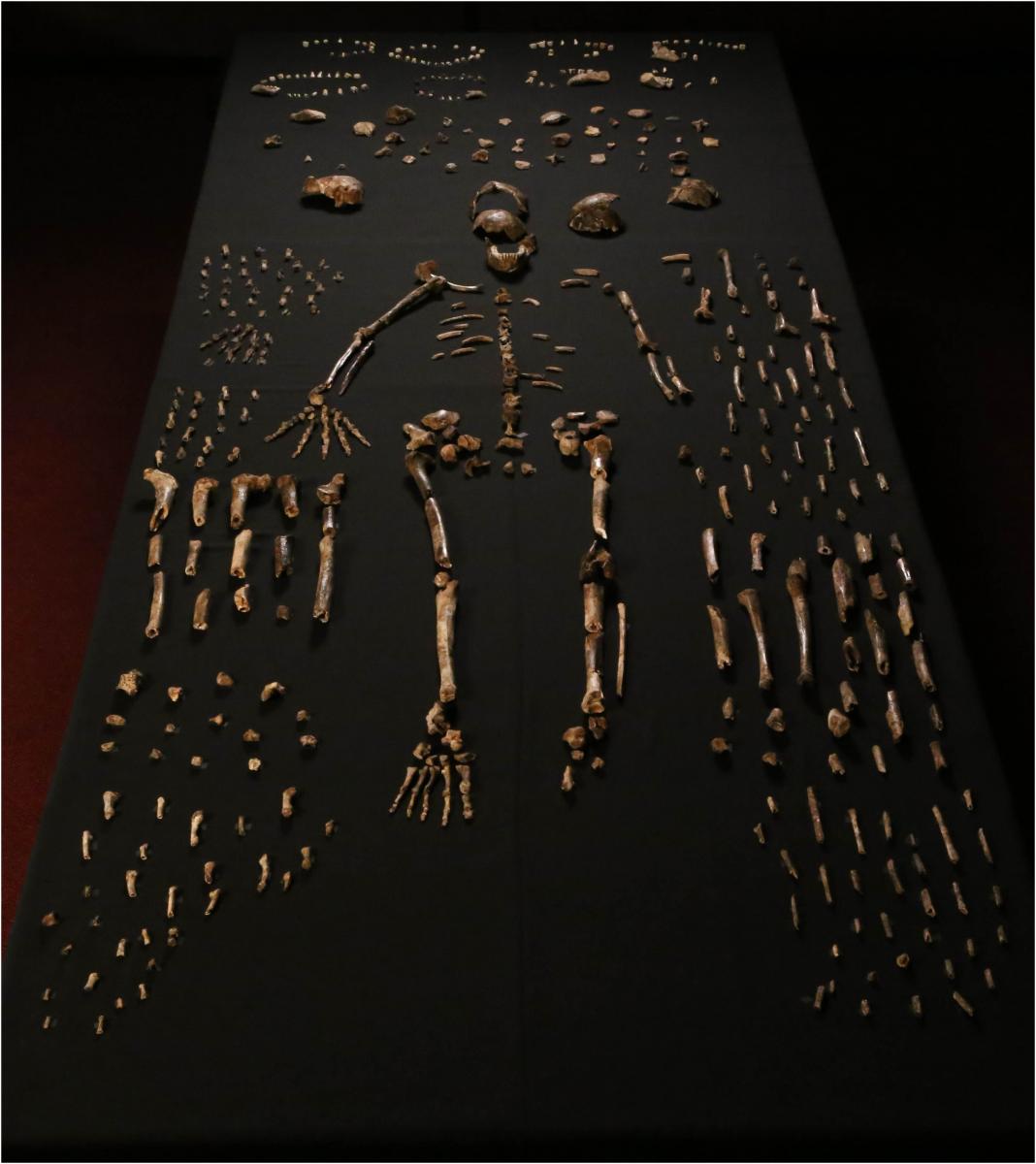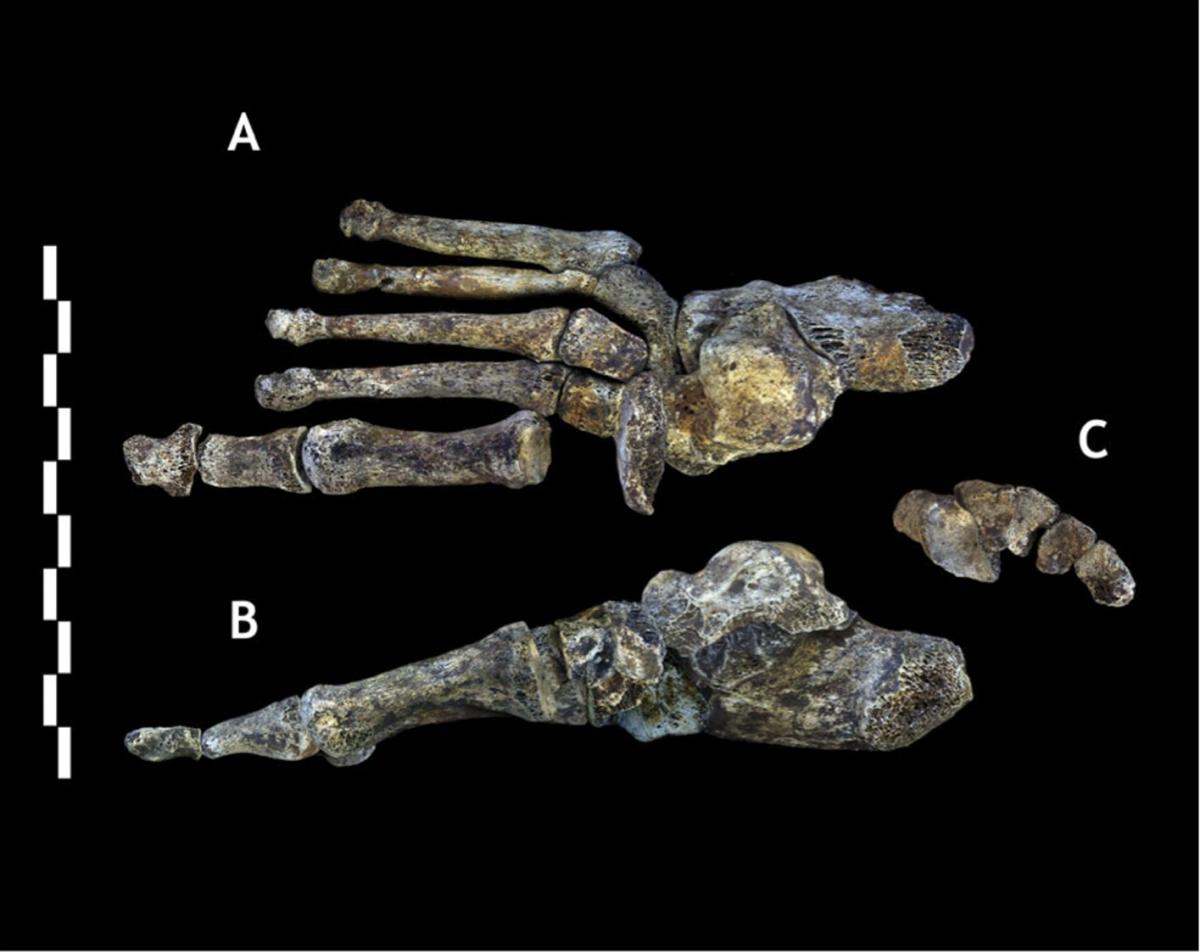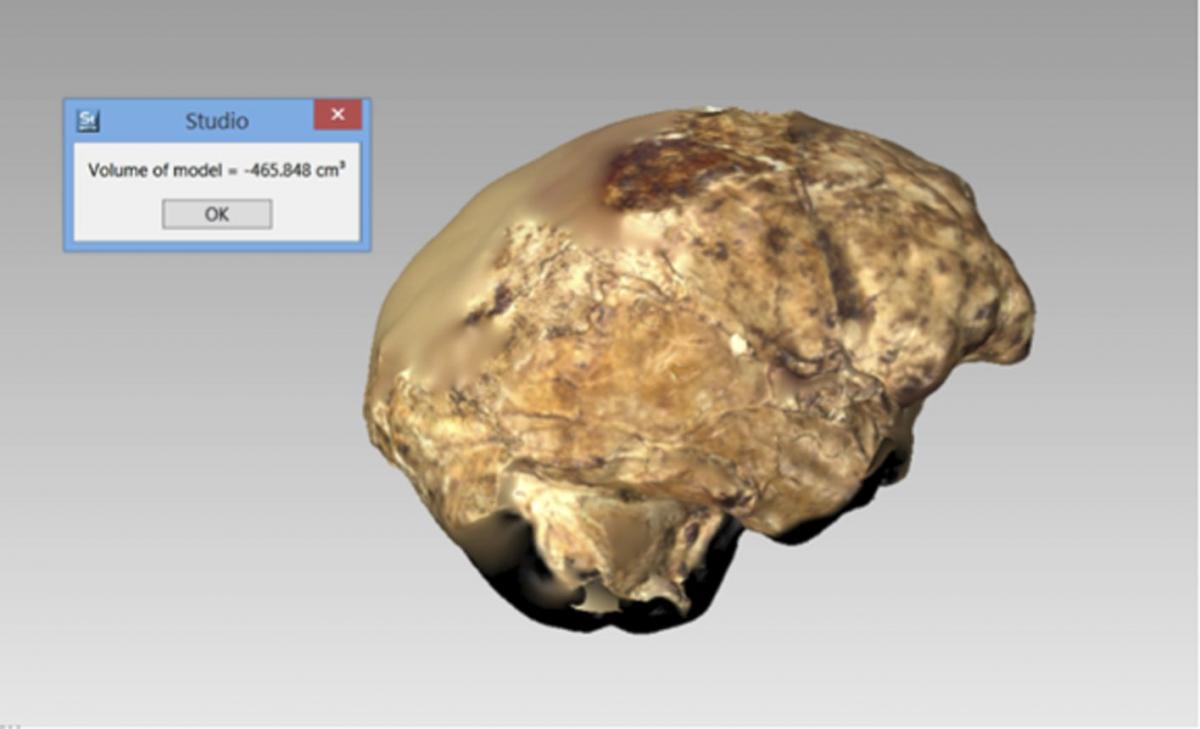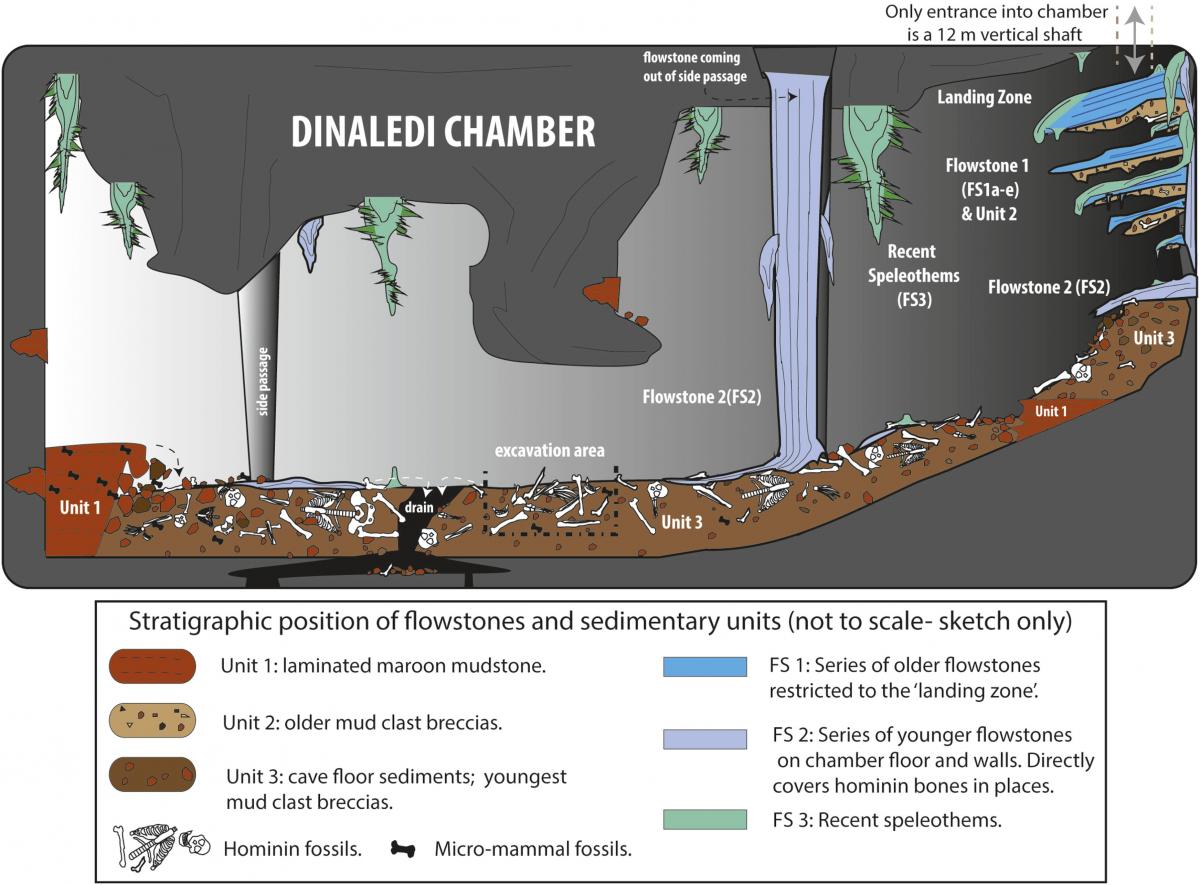In Part 1, I described the totally serendipitous discovery of an unprecedented hominin fossil haul. More than 1,500 bones of at least fifteen individuals (representing both genders and ages ranging from infant to elderly) of a new hominin species were pulled from an extremely difficult-to-get-to cave in South Africa. When we left off, more than fifty scientists had just finished a six-week fossil identification and sorting party and we were getting ready to unveil Homo naledi and explain why one paleoanthropologist called it “weird as hell.”
 I think I’ve used the following phrase before, but it’s worth repeating. Evolution results in a mosaic of traits. It’d be nice and neat if traits evolved in a set order, so that every species of a certain slice of geologic time has Trait A, then all subsequent species have traits A and B, and then A, B, C, and so forth. But instead you get a hodgepodge. Once species has traits A, E, and G while a contemporary species has A, B, T, and P. Then a later species has E, T, Q, and R…. well, you get the idea. It’d be great if trait distribution in the fossil record told a nice, neat story, but it doesn’t—and if it seems to, it’s only because the fossil record is incomplete, and it’s easy to draw a straight line if you only have a few data points.
I think I’ve used the following phrase before, but it’s worth repeating. Evolution results in a mosaic of traits. It’d be nice and neat if traits evolved in a set order, so that every species of a certain slice of geologic time has Trait A, then all subsequent species have traits A and B, and then A, B, C, and so forth. But instead you get a hodgepodge. Once species has traits A, E, and G while a contemporary species has A, B, T, and P. Then a later species has E, T, Q, and R…. well, you get the idea. It’d be great if trait distribution in the fossil record told a nice, neat story, but it doesn’t—and if it seems to, it’s only because the fossil record is incomplete, and it’s easy to draw a straight line if you only have a few data points.
 But when the team tried to plot Homo naledi on the map of hominin evolution, things got more than messy—they got perplexing. H. naledi has some features that are very modern, including feet that apparently are indistinguishable from our own. The shoulders, however, are more similar to early hominins like the famous Australopithecus afarensis, “Lucy.” Then there are “schizoid” parts of the body that are a hybrid of modern and ancient. The top of the hips, for example, resembles an Australopithecus, but the bottom of the pelvis looks modern. In their mouths, H. naledi had modern molars but “weirdly primitive” premolar roots. The hand bones were modern, but the fingers were long and curved, seemingly well adapted to climbing. In general, there seemed to be enough “modern” to place the find within the Homo genus…but there is one problem.
But when the team tried to plot Homo naledi on the map of hominin evolution, things got more than messy—they got perplexing. H. naledi has some features that are very modern, including feet that apparently are indistinguishable from our own. The shoulders, however, are more similar to early hominins like the famous Australopithecus afarensis, “Lucy.” Then there are “schizoid” parts of the body that are a hybrid of modern and ancient. The top of the hips, for example, resembles an Australopithecus, but the bottom of the pelvis looks modern. In their mouths, H. naledi had modern molars but “weirdly primitive” premolar roots. The hand bones were modern, but the fingers were long and curved, seemingly well adapted to climbing. In general, there seemed to be enough “modern” to place the find within the Homo genus…but there is one problem.
 “It has a tiny head. People expect species from the Homo genus to have bigger brains.” That’s what my friend and paleoanthropologist Briana Pobiner told me when I asked her about H. naledi. Jamie Shreeve, in his excellent piece for National Geographic, described it this way: “These were pinheads, with some humanlike body parts.” How tiny were their brains? Well, remember how I said some paleoanthropologists were unhappy with H. habilis being within our genus because its brain is about half the size of ours? H. naledi has an even smaller brain.
“It has a tiny head. People expect species from the Homo genus to have bigger brains.” That’s what my friend and paleoanthropologist Briana Pobiner told me when I asked her about H. naledi. Jamie Shreeve, in his excellent piece for National Geographic, described it this way: “These were pinheads, with some humanlike body parts.” How tiny were their brains? Well, remember how I said some paleoanthropologists were unhappy with H. habilis being within our genus because its brain is about half the size of ours? H. naledi has an even smaller brain.
So it seems we might have to give up on “big brains” being the hallmark of our genus. But that’s not the only tough pill scientists have to swallow. Remember how these bones were found in a cave accessible only to super-tiny super-scientists and spelunkers? How’d they get there? And why were there so many bones all together? The latter question has an easier, albeit surprising answer. There were no teeth marks on the bones, so scientists have eliminated the possibility of the bones being dragged to the cave by predators. Besides, you would assume predators would drag other animals into the cave, too. They have also eliminated the idea that the hominins lived in the cave, since there was no evidence of stone tools or anything else that would suggest habitation. And finally, the bones are distributed in such a way as to make it highly improbable that the hominins got trapped. So you eliminate all of those possibilities and what are you left with? H. naledi was dumping their dead—deliberately and repeatedly potentially over centuries. This is different from saying that they buried their dead—there is no evidence of ceremony or ritual—but there is still some sophistication to this process. Why’d they do it? Pobiner says: “Dead people smell bad and attract predators. A cave would be a good place to keep them far away from where you hang out, too, so I can see chucking bodies into the cave so you wouldn’t be the next one eaten for dinner.” (Can you guys tell why she’s my friend?)

Okay, so they were chucking bodies into the cave…but how? The easy answer would be that the cave was once directly accessible from the surface—but there is no evidence to support that. There are no bones from other organisms, for example, that would surely have fallen in or gotten trapped were there an entrance to a giant cave along the ground. There are also no plants or rubble that would have certainly washed in from the surface. So they must have climbed down into the cave, through (presumably the then-wider) Superman’s Crawl to drop the bodies down the chute and into the cavern where they were found. Why is this a difficult pill to swallow for some? Because there is no way the H. naledi could have completed that trip without some light—they must have had torches. And for some, the idea that a tiny-brained creature could do that is just too difficult to accept. Paleoanthropologist Richard Leakey (son of Louis and Mary), for one, doesn’t buy it. “There has to be another entrance. Lee [Berger] just hasn’t found it yet.”
Geologists say no, however. There was no other entrance. Eric Roberts said simply, “There isn’t a lot of subjectivity here. The sediments don’t lie.”
Sediments might not lie, but they aren’t always as informative as you want them to be, either, which brings us to a big problem with Homo naledi… to be discussed in Part 3.
Are you a teacher and want to tell us about an amazing free resource? Do you have an idea for a Misconception Monday or other type of post? Have a fossil to share? See some good or bad examples of science communication lately? Drop me an email or shoot me a tweet @keeps3.

